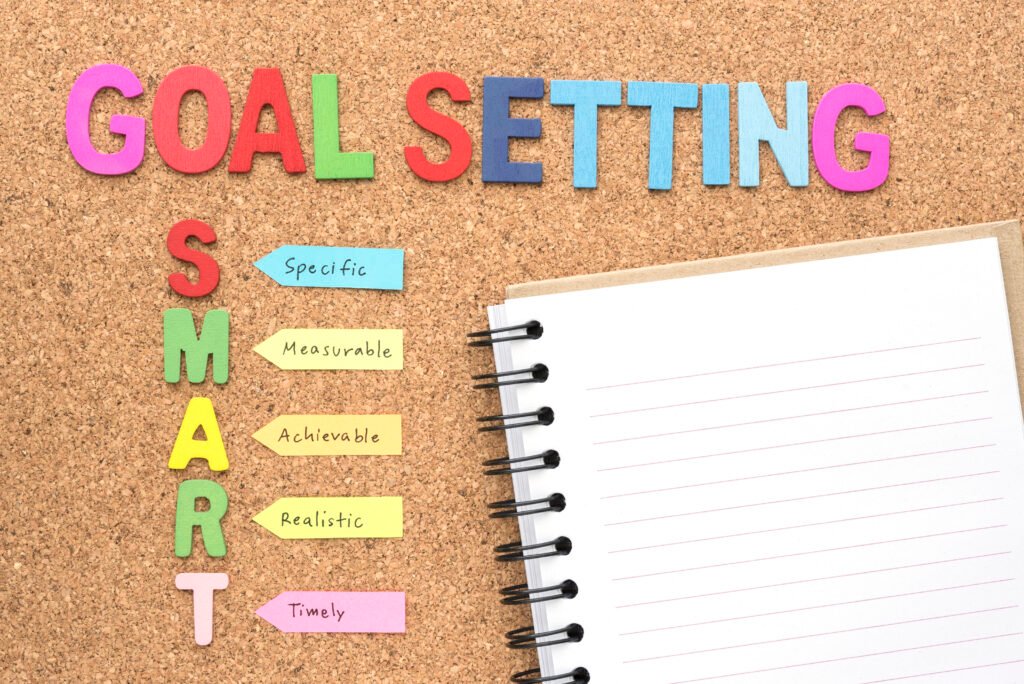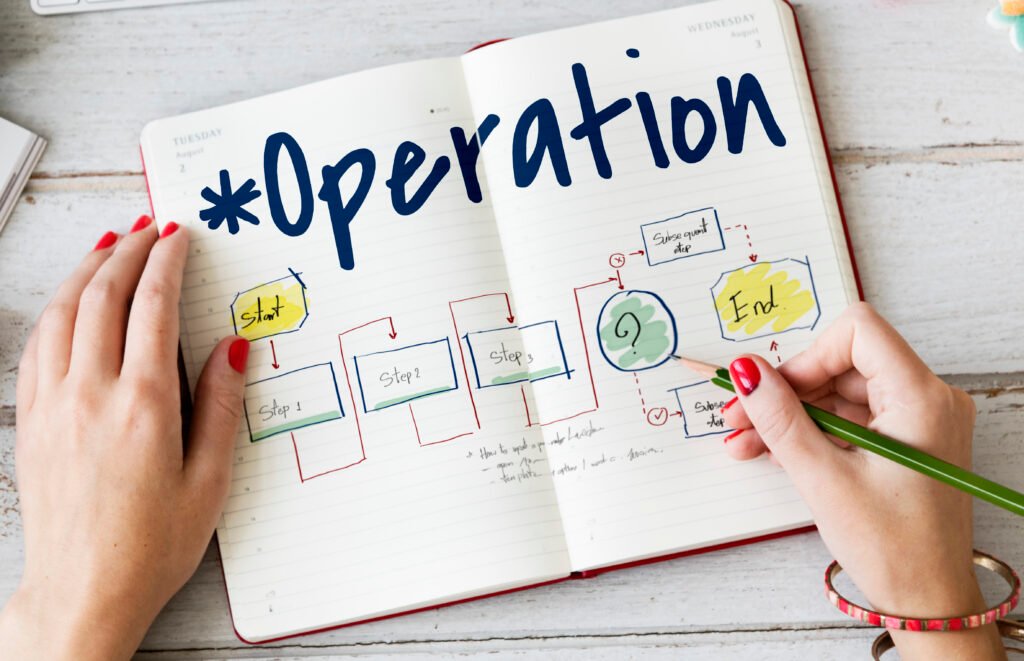Table of Contents
Step into a realm where productivity reigns supreme! In this space, we unravel the secrets to elevate your efficiency and amplify your accomplishments. We’re here to guide you through a transformative journey toward heightened productivity in every facet of your life.
In a world where time is a precious commodity, mastering productivity is akin to wielding a superpower. Here, we delve deep into the realms of time management, task optimization, and mindset refinement. We aim to equip you with the arsenal needed to conquer procrastination, streamline workflows, and craft a life brimming with purposeful action.
Through insightful strategies, practical tips, and actionable advice, we unlock the gates to a realm where goals aren’t just set—they’re achieved, where the focus isn’t fleeting—it’s unwavering, and where every minute is a catalyst for progress.
Join us in this exploration of productivity mastery. Let’s embark on a quest together, navigating the intricate landscape of habits, tools, and techniques that will revolutionize the way you work, live, and thrive. Welcome to a space where productivity is not just a goal—it’s a way of life.
TIME MANAGEMENT TECHNIQUES

Becoming a productivity master through effective time management is the gateway to a more efficient and fulfilling life. By honing this skill, you can transform chaotic days into well-structured, productive ones. Time management isn’t merely about squeezing more tasks into each day; it’s about optimizing your time to accomplish what truly matters while maintaining a healthy balance.
- Pomodoro Technique: Divide your tasks into intervals, often consisting of 25 minutes of concentrated work followed by a brief pause. This technique aids in sustaining focus and preventing burnout.
- Eisenhower Matrix: Prioritize tasks by urgency and importance, sorting them into four categories: important and urgent, important but not urgent, urgent but not important, and neither urgent nor important.
- Time Blocking: Dedicate distinct time blocks for various tasks or activities during your day. This approach establishes a structured schedule and discourages multitasking.
- Eat That Frog: Start your day by addressing your most challenging or less desirable task right away. Completing this task early can elevate motivation and establish a positive momentum for the day ahead.
- Getting Things Done: Organize tasks into actionable items, projects, and next steps. This method focuses on clearing mental clutter and enhancing productivity.
- The Two-Minute Rule: If a task requires less than two minutes to finish, address it promptly. This practice prevents the accumulation of small tasks, averting potential overwhelm.
- Batching: Group similar tasks together and tackle them in one dedicated session. For example, answering emails or making phone calls during a specific time slot.
GOAL SETTING AND ACHIEVEMENT

Setting productive goals acts as the compass guiding aspirations into reality. It encompasses defining specific, measurable, achievable, relevant, and time-bound (SMART) objectives that drive progress. By establishing clear and productive goals, you offer direction, clarity, and motivation for your actions. Achieving these goals involves strategic planning, dedication, and consistent effort. It necessitates dissecting larger objectives into smaller, actionable steps, monitoring progress, and adapting strategies when necessary. Celebrating milestones throughout the journey fuels motivation and maintains the momentum necessary for productivity.
Successful goal achievement isn’t just about reaching the destination; it’s about the journey—learning, adapting, and growing throughout the pursuit. It’s a cycle of setting new objectives, striving for them, and relishing the satisfaction of progress and accomplishment.
Introducing Solimo Notebooks, a set of three spiral-bound notebooks with Kraft covers. Each notebook features 160 ruled pages of smooth paper, perfect for writing with fountain pens. The lightweight design and sturdy cover make them ideal for everyday use at home, school, or the office. Available in timeless designs and pleasing colors.
WORKFLOW OPTIMIZATION

Workflow optimization involves refining the sequence of tasks and processes to enhance efficiency, minimize bottlenecks, and maximize output quality. It’s about analyzing, reorganizing, and streamlining the steps involved in completing a task or project. This optimization often includes identifying redundant steps, automating repetitive tasks, and establishing more efficient communication and collaboration channels. By mapping out workflows, removing unnecessary stages, and implementing improvements, organizations and individuals can significantly boost productivity and reduce errors. Additionally, integrating technology, leveraging specialized tools, and fostering a culture of continuous improvement contribute to a more streamlined workflow. Ultimately, workflow optimization aims to create a more fluid, efficient, and responsive system that enables individuals or teams to accomplish tasks in a more structured and effective manner.
MINDSET AND FOCUS

Entering the realm of mindset and focus unlocks the gateway to maximizing potential and achieving unparalleled productivity. Cultivating the right mindset and honing your focus are fundamental pillars in navigating life’s challenges and attaining goals with precision and clarity.
- Mindfulness Practices: Explore mindfulness techniques like meditation and grounding exercises to center the mind, reduce stress, and improve focus.
- Growth Mindset Development: Understand the power of a growth mindset in fostering resilience, learning, and embracing challenges as opportunities for growth.
- Managing Directions: Strategies to identify and manage distractions, boosting concentration and creating conducive environments for sustained focus.
- Visualization and Affirmation: Utilize visualization and positive affirmations to reinforce a positive mindset and align thoughts with desired outcomes.
- Adaptability and Resilience: Cultivate resilience in the face of adversity, learning from setbacks, and adapting with a flexible mindset.
- Deep Work Techniques: Dive into the concept of deep work, employing strategies to enter a state of intense focus for optimal productivity.
- Mindset for Success: Explore how reframing thoughts and attitudes can significantly impact performance and contribute to overall success.
- Flow State Mastery: Understand the psychology behind achieving a flow state, facilitating peak performance and heightened productivity.
- Mindset and Personal Development: Examine how mindset influences personal growth, goal setting, and long-term success across various life domains.
TOOLS AND TECHNOLOGY FOR PRODUCTIVITY

Welcome to the realm where tools and technology converge to elevate productivity to new heights. In this digital era, leveraging the right tools can transform the way tasks are managed, organized, and executed, optimizing efficiency and output.
- Project Management Apps: Explore platforms like Trello, Asana, or Monday.com, which facilitate task assignments, progress tracking, and team collaboration.
- Note-Taking and Organization Tools: Discover applications such as Evernote or Notion, allowing seamless note-taking, information organization, and knowledge management.
- Time Tracking Software: Utilize tools like Toggl or RescueTime to monitor time usage, analyze productivity patterns, and identify areas for improvement.
- Communication Platforms: Platforms like Slack, Microsoft Teams, or Zoom enhance team communication, fostering collaboration and swift information exchange.
- Automation Tools: Embrace automation through tools like Zapier or IFTTT to streamline repetitive tasks and integrate various applications seamlessly.
- Cloud Storage Solutions: Platforms such as Google Drive, Dropbox, or OneDrive provide secure and accessible cloud storage, enabling easy data sharing and collaboration.
- Focus and Distraction Management Apps: Applications like Forest or Freedom help in managing distractions, boosting focus, and maintaining concentration.
- Mind Mapping and Brainstorming Tools: Discover tools like MindMeister or Miro for visualizing ideas, brainstorming, and organizing thoughts collaboratively.
- Task Automation and Schedulers: Tools such as Todoist or Any.do assist in task management, scheduling, and setting reminders for efficient time utilization.
- Email Management Application: Explore applications like Spark or Gmail’s built-in features to manage and organize emails efficiently.
HEALTHY WORKING HABITS

Entering the world of healthy working habits unveils a realm where balance, well-being, and productivity intersect harmoniously. Establishing these habits isn’t just about completing tasks—it’s about nurturing yourself to perform at your best while maintaining vitality and mental clarity.
- Regular Breaks and Movement: Incorporate short breaks throughout the workday to stretch, move, and refresh your mind, preventing burnout and improving focus.
- Ergonomic Work Setup: Optimize your workstation for comfort and posture to minimize physical strain, including proper chair height, screen positioning, and keyboard placement.
- Hydration and Nutrition: Stay hydrated and maintain balanced nutrition to sustain energy levels and cognitive function throughout the day.
- Prioritize Sleep: Ensure adequate and consistent sleep to promote mental alertness, enhance problem-solving abilities, and support overall well-being.
- Set Boundaries and Manage Workload: Establish boundaries between work and personal life to prevent overworking and manage workload effectively to avoid overwhelm.
- Mindfulness and Stress Management: Practice mindfulness techniques, meditation, or deep breathing exercises to manage stress and maintain a clear, focused mind.
- Physical Activity Integration: Incorporate regular physical activity or exercise into your routine to boost mood, reduce stress, and increase overall well-being.
- Goal Setting and Planning: Set clear goals, prioritize tasks, and plan your schedule to maintain focus and prevent procrastination.
- Effective Communication and Collaboration: Foster healthy communication with colleagues, setting realistic expectations, and ensuring clarity in tasks to reduce workplace stress.
- Continual Learning Growth: Dedicate time to learning new skills or knowledge related to your field, fostering a sense of growth and fulfilment in your work.
DELEGATION AND OUTSOURCING

Welcome to the realm where delegation and outsourcing empower individuals and organizations to optimize productivity and focus on core competencies. Delegation involves entrusting tasks to others, while outsourcing extends this concept to external resources or third-party services, allowing efficient task allocation and strategic resource utilization.
- Task Assessment and Prioritization: Identify tasks that can be delegated or outsourced, focusing on high-priority activities that align with your strengths and goals.
- Effective Communication: Communicate expectations, guidelines, and desired outcomes when delegating tasks or engaging external resources to ensure clarity and efficiency.
- Skill Evaluation and Matching: Delegate tasks to individuals or outsource to entities with the necessary skills and expertise, optimizing task completion and quality.
- Trust and Empowerment: Trust the individuals or entities to whom tasks are delegated, empowering them to make decisions within defined parameters to foster efficiency.
- Time and Resource Optimization: Delegating or outsourcing non-core tasks frees up time and resources, allowing focus on critical activities that drive success.
- Cost Efficiency and Scalability: Outsourcing certain functions or tasks can offer cost savings, scalability, and access to specialized skills or technology.
- Risk Management: Evaluate risks associated with delegation or outsourcing, ensure proper agreements, and monitor progress to mitigate potential issues.
- Feedback Review: Provide feedback and periodic reviews to ensure alignment with goals and maintain quality standards in delegated or outsourced tasks.
- Continual Improvement: Assess the effectiveness of delegation and outsourcing strategies regularly, refining processes for optimal efficiency and outcomes.
- Strategic Planning and Decision Making: Utilize delegation and outsourcing strategically, aligning these practices with long-term goals and organizational objectives.
EFFECTIVE COMMUNICATION

Productive communication stands as the cornerstone of successful interactions, cultivating understanding, clarity, and alignment among individuals or within organizations. It entails transmitting information clearly and concisely, ensuring it’s received and comprehended accurately for enhanced productivity. Active listening, articulating ideas coherently, and adapting communication styles to the audience are pivotal elements in fostering productive connections.
Moreover, effective communication entails transparency, honesty, and empathy, fostering trust and rapport. It’s about not just conveying information but also ensuring it’s interpreted correctly, leaving no room for misunderstandings or ambiguity. Utilizing various mediums—verbal, written, or non-verbal—to convey messages enhances the efficacy of communication. Finally, feedback loops and open channels facilitate continuous improvement and ensure that messages are not only sent but received and understood as intended, enabling smoother collaborations and more harmonious relationships.
CONTINUOUS LEARNING AND SKILL DEVELOPMENT

Continuous learning and skill development form the backbone of personal and professional growth in today’s dynamic landscape. It involves a deliberate, ongoing commitment to acquiring new knowledge, refining existing skills, and adapting to changing environments.
Embracing continuous learning requires a growth mindset, where individuals seek out education opportunities, whether through formal courses, workshops, or self-directed learning. Skill development encompasses both hard skills (technical abilities specific to a role or industry) and soft skills (communication, leadership, adaptability), fostering a well-rounded and adaptable skill set.
By staying abreast of industry trends, technological advancements, and best practices, individuals remain competitive and agile in their fields. This approach not only enhances expertise but also cultivates innovation, resilience, and adaptability. Embracing a culture of continual learning enables individuals to thrive in a rapidly evolving world, ensuring they remain relevant and valuable contributors in their professions.
WORK-LIFE BALANCE

Welcome to the pursuit of equilibrium—the world of work-life balance where professional aspirations harmonize with personal fulfilment. Achieving a healthy work-life balance is about more than just juggling career demands and personal life; it’s about integrating both seamlessly to nurture overall well-being.
- Setting Boundaries: Establish clear boundaries between work and personal life to prevent burnout and maintain mental and emotional well-being.
- Prioritization and Time Management: Prioritize tasks, manage time effectively, and allocate dedicated periods for work and leisure to ensure a balanced schedule.
- Flexible Work Arrangements: Embrace flexible work options, such as remote work or flexible hours, to accommodate personal needs and increase autonomy.
- Mindfulness and Presence: Practice mindfulness to stay present in each moment, enhancing focus and reducing stress from both work and personal life.
- Healthy Routines and Self-Care: Cultivate healthy habits, including regular exercise, adequate sleep, and self-care practices to support physical and mental health.
- Quality Relationships and Social Connections: Foster meaningful relationships and social connections outside of work to maintain a fulfilling personal life.
- Continuous Learning and Personal Development: Dedicate time to personal growth, learning, and hobbies that bring joy and fulfilment beyond professional pursuits.
- Communication and Boundaries at Work: Effectively communicate needs and boundaries with colleagues and supervisors to maintain a healthy work environment.
- Unplugging and Detoxing From Work: Disconnect from work during non-working hours, allowing time for relaxation, hobbies, and spending time with loved ones.
- Reflection and Evaluation: Regularly reflect on your work-life balance, reassess priorities, and make necessary adjustments to achieve harmony.
Experience the brilliance of Faber-Castell 379024 CS Acrylic Colors. This set of 24 assorted colors features high-quality pigments for vibrant results. Enjoy their glossy and opaque finish, while their butter-like spreadability ensures smooth application. Perfect for artists of all levels seeking professional-quality acrylic paints for their creative projects.
As we conclude this exploration into boosting productivity, remember: productivity isn’t merely about doing more; it’s about doing what matters most effectively. By implementing the strategies and principles shared here, you’re equipped to transform how you approach tasks and goals.
Efficiency isn’t a one-size-fits-all concept; it’s about finding what works best for you. Embrace experimentation, adaptability, and a mindset of continual improvement. Celebrate progress, no matter how small, and remain open to refining your methods.
Remember, productivity isn’t solely about work—it’s about crafting a life that aligns with your values, allowing time for what truly matters: personal growth, relationships, and well-being.
So, as you navigate your journey towards increased productivity, may these insights guide you in optimizing your time, harnessing your focus, and unlocking your full potential. Here’s to a life where productivity catalyzes fulfilment, success, and a more balanced, purpose-driven existence.
MORE LIFESTYLE RELATED ARTICLES

